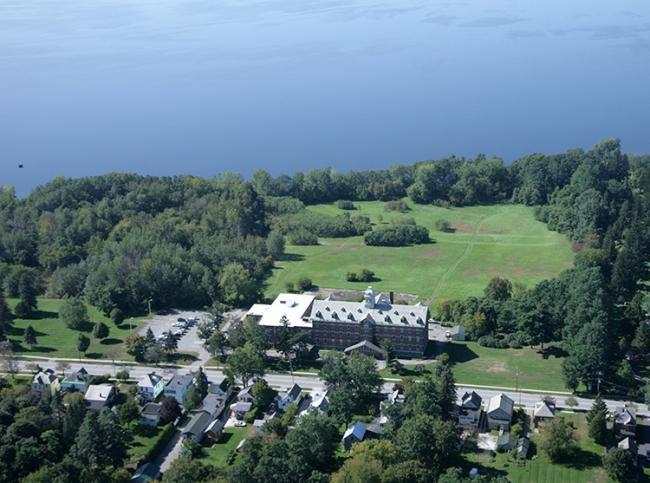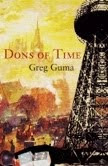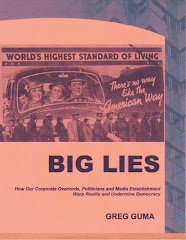 WELCOME TO MAVERICK MEDIA, an interactive, online resource for news, analysis and informed opinion. More than 400 articles and comments, plus unique video and audio, are posted here, including chapters of works in progress about media, politics and life in the US over the last half century. The goal is to offer a larger context for understanding the evolution of culture and society, along with problems confronting progressive movements.
WELCOME TO MAVERICK MEDIA, an interactive, online resource for news, analysis and informed opinion. More than 400 articles and comments, plus unique video and audio, are posted here, including chapters of works in progress about media, politics and life in the US over the last half century. The goal is to offer a larger context for understanding the evolution of culture and society, along with problems confronting progressive movements.Recent Articles
-->Mission Improbable: Revisiting 9/11
Scared Socialist (or, How Deregulation Trashed the US Economy and Government Intervention Became the Only Way Out)
***
Media, Democracy & the Post-Modern Age
***
The Oil Spill: Accident or Cyber Attack? Blog Post * Toward Freedom
***
Below you will find a Content Guide providing access to more articles and videos, along with other recommended material. Using the links will take you to specific articles, major works, or special features. At the foot of the site you’ll find an up-to-the minute, rotating Alternative News crawl. On the Sidebar are more special features, a photo gallery, plus links to recordings, new videos, recommended websites, and links to Maverick Media books, documentaries, and videos. Click Subscribe Here for notification of new posts. Search for any reference via the search option, top left. Comments are welcome in response to any article, and reviewed before posting within 24 hours.
As noted in the first article posted on this site, “corporate media's handling of the news has become increasingly unreliable over the years. In fact, mainstream journalists find it difficult, if not dangerous, to cover stories that do not fit neatly into what is known as the Washington Consensus. Meanwhile, corporations have developed sophisticated strategies to promote the stories they want to see, and prevent others from being aired or published. The result is perception management, a highly effective form of social engineering.”
That’s why alternative sources are important: they help people to challenge the knowledge monopoly of elites. Maverick Media is part of that challenge.
**
Editor and Writer
Content Guide
**
For videos, visit Maverick Media’s YouTube Channel.
PLANET PACIFICA: An Inside Story
*
DANGEROUS WORDS: A Maverick Memoir Education of an Outsider in the 1960s * Fragile Paradise: A Vermont Memoir * Prelude to a Revolution: Vermont before the People’s Republic, Haiti under Baby Doc, and how the FBI manufactured a terrorist scare
PRISONERS OF THE REAL: An Odyssey Incorporating insights from linguistics, psychology, physics, literature, philosophy and management science, Prisoners of the Real examines the cost of society’s preoccupation with certainty and order, and opens the door to a new vision of freedom and cooperation – Dionysian leadership. -->VERMONT & THE PROGRESSIVE PARADOX This eight-part essay looks at the movement that began with the election of Bernie Sanders on March 3, 1981 and subsequently changed the face of Vermont politics.THE AFTERLIFE & THE ROOTS OF THEOSOPHY A four-part essay discussing various theories about ghosts and the afterlife, and offering excerpts from my novel, Spirits of Desire.
PRESIDENTIAL DEATH MATCH: Fatal Distractions Managing Perceptions on the Campaign Trail (2000-2008)
LABOR & THE FIRST RED SCARE Unions are portrayed today as just another special interest group. Yet the true, largely ignored early history of the labor movement tells a very different story.
TALES FROM THE COVERT CRYPT A three-part series covering covert activities in Afghanistan, Congo, Iraq, Yugoslavia, Chile and Georgia, plus the roles of Kissinger and Brzezinski in managing misdirection*
CONVENTION WATCH 2008 News, daily highlights, videos, history, and the first US “third party”
MAVERICK NEWS (text and audio versions)
*
VIDEO LIBRARY
Remembering Hiroshima: How & Why
Sanders Talks Socialism with Colbert
Vermont TV Ad Pledges Bush Prosecution VP Debate Preview: On Choice, Church & State
Vermont TV Ad Pledges Bush Prosecution VP Debate Preview: On Choice, Church & State
*
VIDEO FEATURE: The New World Order - Hidden in Plain Sight
*
Nonviolence & the Road to Independence
ALSO AVAILABLE ONLINE
Executing Justice: Vermont’s Death Penalty Debate (2005)
*
MILITARY PRIVATIZATION
*
Material is also organized by topic. The Topic List currently includes: Conventions, Democracy, Economics, Elections, Germany, Haiti, Independent Media, Labor, McCain, Media Analysis, Nonviolence, Obama, Pacifica History, Pacifica News, Perception Management, Satire, Theory, Vermont, War and Peace, and Weekly News. Type the word or phrase into Search to see every article on the topic. Thanks to the various websites and organizations that have also published my work via the Internet, including Common Dreams, ZNet, Countercurrents, Toward Freedom, Alternet, UPI, Third World Traveler, Buzzflash, Reclaim the Media, Media Channel, Second Vermont Republic, Pacificana, Pacifica Radio Waves, Vermont Guardian, and many more.
Keep in touch with Maverick Media for updates, essays and videos on politics, perception management, and alternative media.
































